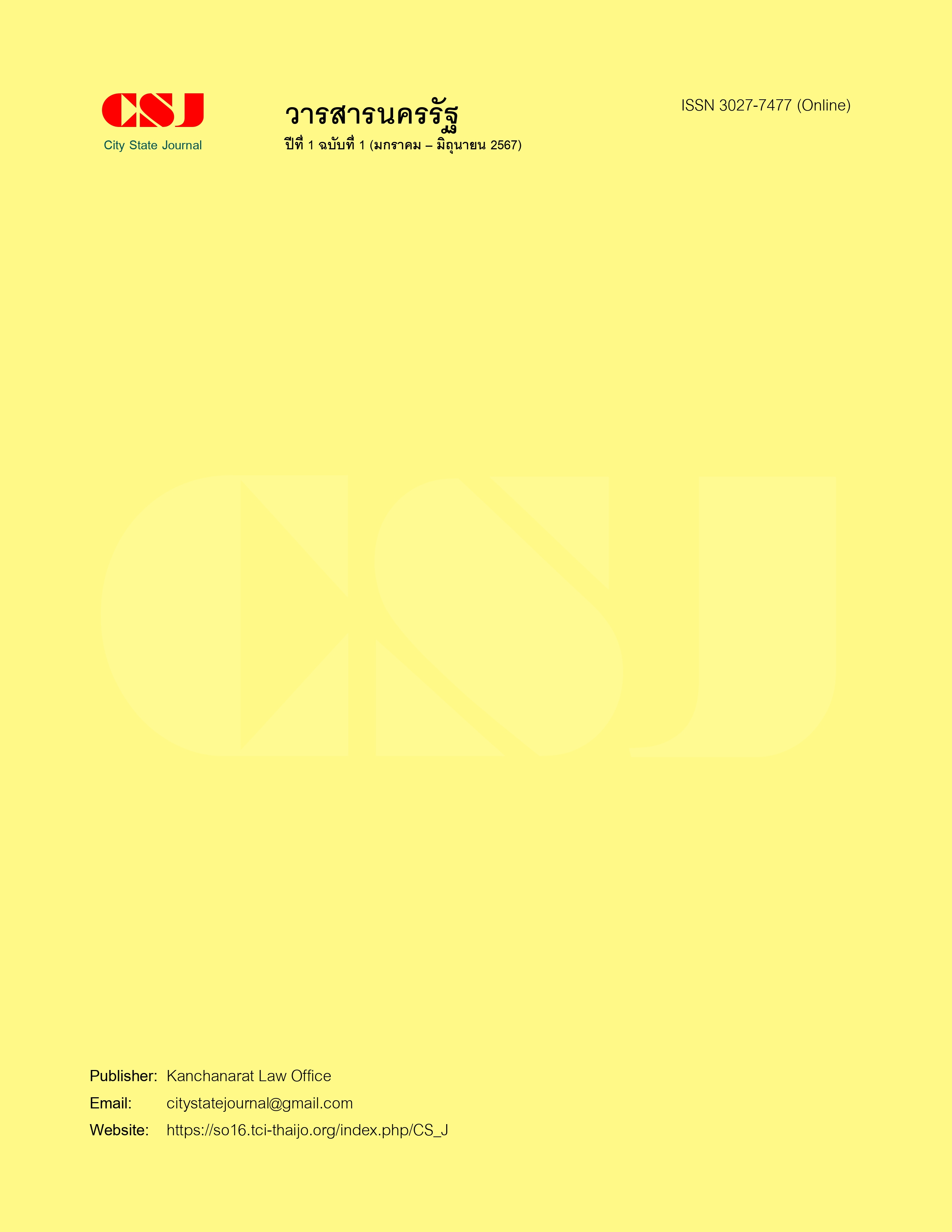The Appointment of the Prime Minister According to Constitution of the Kingdom of Thailand, B.E. 2560 (2017)
Main Article Content
Abstract
This academic article aims to analyze the appointment of the Prime Minister on the issue of membership in the House of Representatives according to the principles of democracy in the parliamentary system. To be a proposal that the constitution as the highest law should determine the Prime Minister’s qualifications clearly or not, the Prime Minister must be a member of the House of Representatives to reflect the true representation of the Thai people. Findings are as follows: (1) The appointment of the Prime Minister according to the democratic parliamentary system of England those who hold the Prime Minister’s position must be both members of the House of Representatives and the head of the political party that they are affiliated. India requires the Prime Minister to be a member of the House of Representatives. And Japan requires the Prime Minister from members of the Diet who an elected. (2) The appointment of the Prime Minister of Thailand found that the Constitution of the Kingdom of Thailand, B.E. 2540 (1997) requires the Prime Minister to be appointed from members of the House of Representatives and must retire from the position of House of Representatives. As for the Constitution of the Kingdom of Thailand, B.E. 2550 (2007) the Prime Minister must be a member of the House of Representatives. And the Constitution of the Kingdom of Thailand, B.E. 2560 (2017) did not specify that the Prime Minister must be a member of representatives. But it must be named in the list that the political parties have informed that they will be proposed to be Prime Minister before the election. Therefore, the person who can be appointed as a Prime Minister may or not. Then, the Prime Minister must be a member of the House of the Representatives. In order to comply with the principles of democracy in the parliamentary system.
Article Details

This work is licensed under a Creative Commons Attribution-NonCommercial-NoDerivatives 4.0 International License.
The article published in the journal is the opinion and responsibility of the authors. Not related to Kanchanarat Law Office.
References
ฐากูร ศิริยุทธ์วัฒนา. (2561). กฎหมายรัฐธรรมนูญ: หลักพื้นฐานแห่งกฎหมายรัฐธรรมนูญและระบอบประชาธิปไตย (พิมพ์ครั้งที่ 2). วิญญูชน.
พระราชบัญญัติธรรมนูญการปกครองแผ่นดินสยามชั่วคราว พุทธศักราช 2475. (2475). ราชกิจจานุเบกษา, 49, 166-179.
มานิตย์ จุมปา. (2557). หลักกฎหมายรัฐธรรมนูญ (พิมพ์ครั้งที่ 2). นิติธรรม.
รัฐธรรมนูญแห่งราชอาณาจักรไทย แก้ไขเพิ่มเติม (ฉบับที่ 4) พุทธศักราช 2535. (2535). ราชกิจจานุเบกษา, 109(95), 1-3.
รัฐธรรมนูญแห่งราชอาณาจักรไทย พุทธศักราช 2517. (2517). ราชกิจจานุเบกษา, 91(169 พิเศษ), 1-90.
รัฐธรรมนูญแห่งราชอาณาจักรไทย พุทธศักราช 2540. (2540). ราชกิจจานุเบกษา, 114(55 ก), 1-99.
รัฐธรรมนูญแห่งราชอาณาจักรไทย พุทธศักราช 2550. (2550). ราชกิจจานุเบกษา, 124(47 ก), 1-127.
รัฐธรรมนูญแห่งราชอาณาจักรไทย พุทธศักราช 2560. (2560). ราชกิจจานุเบกษา, 134(40 ก), 1-90.
รัฐธรรมนูญแห่งราชอาณาจักรสยาม พุทธศักราช 2475. (2475). ราชกิจจานุเบกษา, 49, 529-551.
Lijphart, A. (1992). Parliamentary versus presidential government. Oxford University Press.
Ministry of Law and Justice. (2022). The Constitution of India. Retrieved from https://cdnbbsr.s3waas.gov.in/s380537a945c7aaa788ccfcdf1b99b5d8f/uploads/2023/05/2023050195.pdf
Prime Minister’s Office of Japan. (2023). The Constitution of Japan. Retrieved from https://japan.kantei.go.jp/constitution_and_government_of_japan/constitution_e.html

